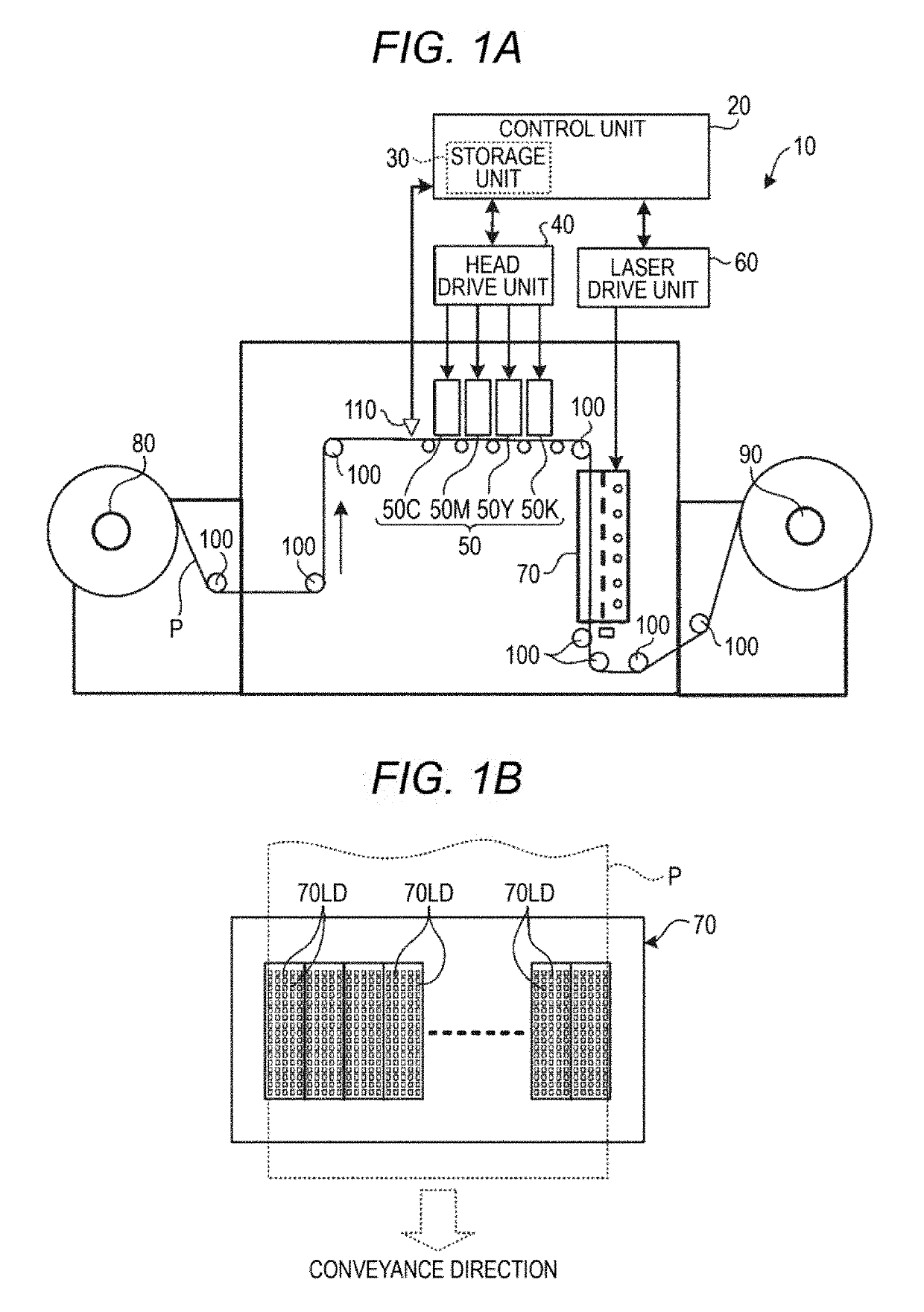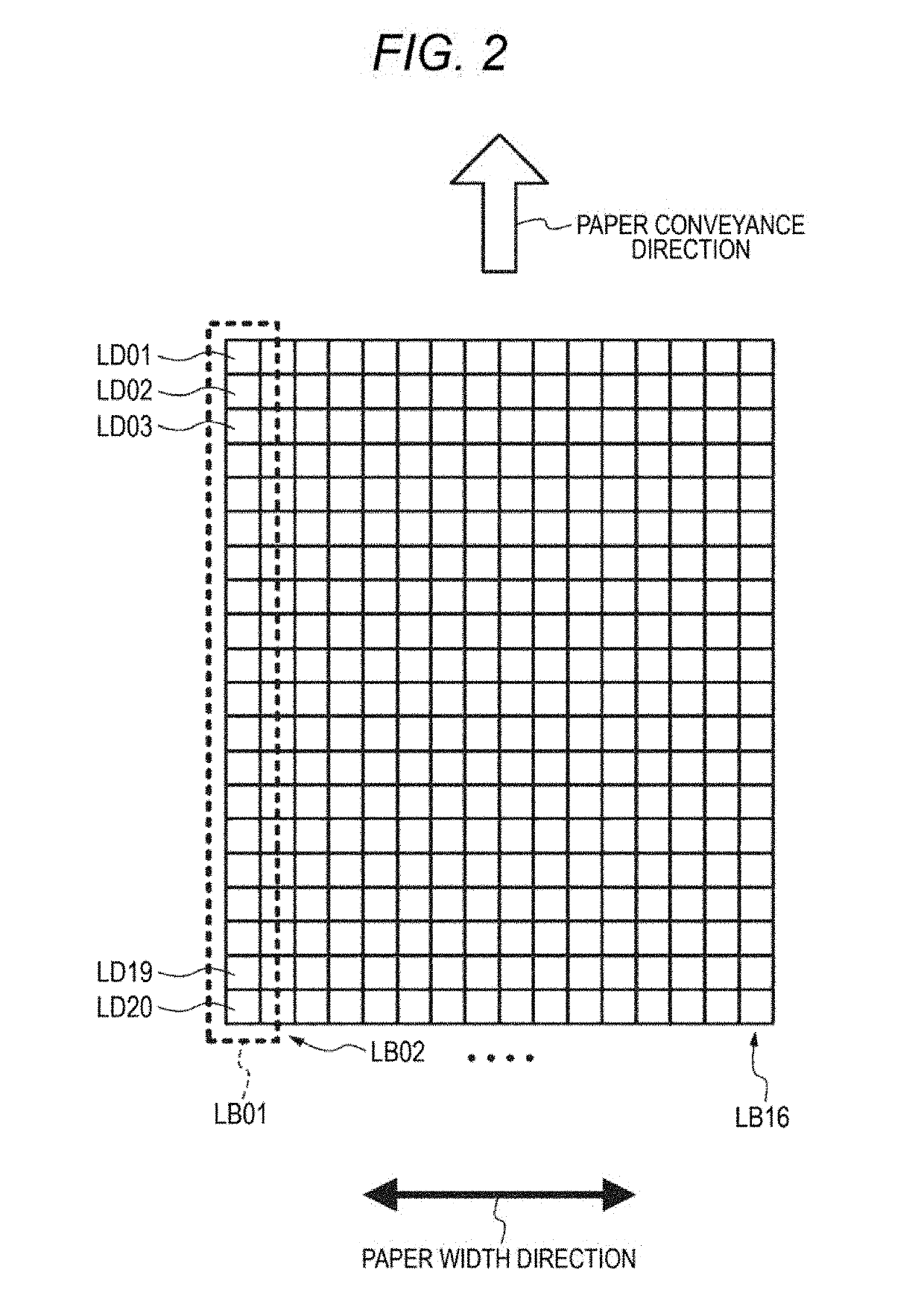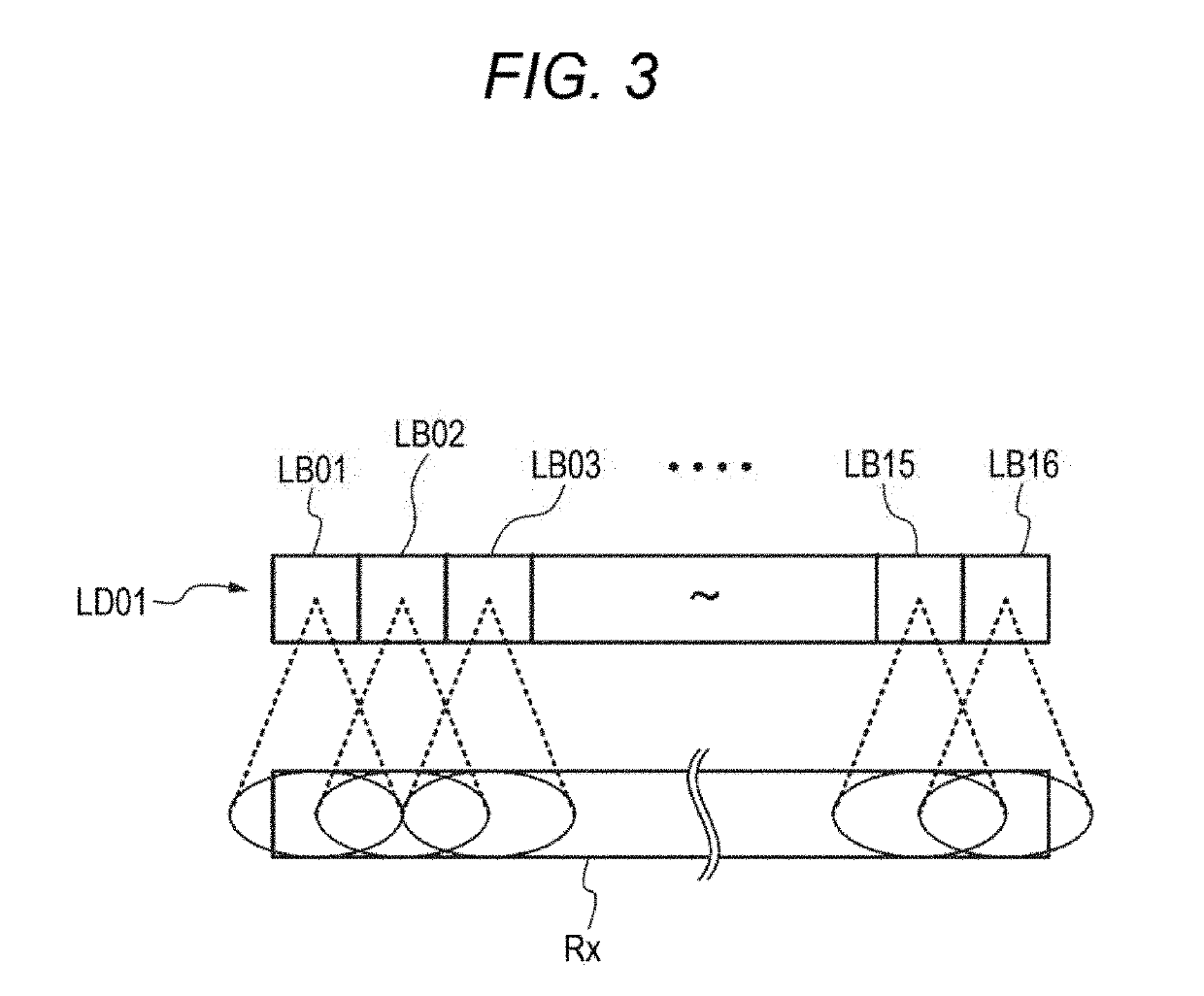Drying device, non-transitory computer readable medium for drying and image forming apparatus
- Summary
- Abstract
- Description
- Claims
- Application Information
AI Technical Summary
Benefits of technology
Problems solved by technology
Method used
Image
Examples
first modification
[0125](First Modification)
[0126]Also, in the present exemplary embodiment, the large pixels 152 and the small pixels 154 (see FIG. 8A) are set in square shapes; however, as shown in FIG. 10A, large pixels 153 and small pixels 155 having rectangular shapes having long sides in the direction perpendicular to the conveyance direction may be used, or as shown in FIG. 10B, large pixels 156 and small pixels 157 having rectangular shapes having long sides in the conveyance direction may be used.
second modification
[0127](Second Modification)
[0128]Also, in the present exemplary embodiment, the large pixels 152 and the small pixels 154 are set uniformly; however, as shown in FIG. 11A, image regions and non-image regions may be classified by a labeling algorithm.
[0129]In other words, of classified image regions, regions having areas equal to or larger than a predetermined area are set as large regions, and regions having areas smaller than the predetermined area are set as small regions, and unit sections of non-image regions are set as minimum sections.
[0130]As shown in FIG. 11B, characteristic curves representing the relationships between Cin and laser energy in individual regions are plotted, and average irradiation energies are set.
[0131]The flow of processing of the second modification will be described with reference to the flow chart of FIG. 12. With respect to steps in which the same processes as those of FIG. 9 are performed, “A” is added to the ends of their reference symbols.
[0132]Fir...
third modification
[0139](Third Modification)
[0140]In the second modification, when the binary image is created, the regions are classified by the single threshold (a Cin value representing the amount of ink drops); however, different binary images may be created using two or more thresholds (Cin values re-printing the amounts of ink drops), and in each of the binary images, region estimation may be performed by a labeling algorithm.
[0141]For example, in the flow of processing, as shown in the flow chart of FIG. 13, as thresholds (Cin values representing the amounts of ink drops) for creating binary images, 50 (=Cin), 100 (=Cin), and 150 (=Cin) are set, and the processes of Steps 314 and 316 of the processing of the flow chart of FIG. 12 are repeated with respect to the different Cin values (see Steps 314A, 316A, 314B, and 316B of the flow chart of FIG. 13).
[0142]Also, in the second modification and the third modification, as the labeling algorithm, the four-neighborhood labeling algorithm is used; ho...
PUM
 Login to view more
Login to view more Abstract
Description
Claims
Application Information
 Login to view more
Login to view more - R&D Engineer
- R&D Manager
- IP Professional
- Industry Leading Data Capabilities
- Powerful AI technology
- Patent DNA Extraction
Browse by: Latest US Patents, China's latest patents, Technical Efficacy Thesaurus, Application Domain, Technology Topic.
© 2024 PatSnap. All rights reserved.Legal|Privacy policy|Modern Slavery Act Transparency Statement|Sitemap



